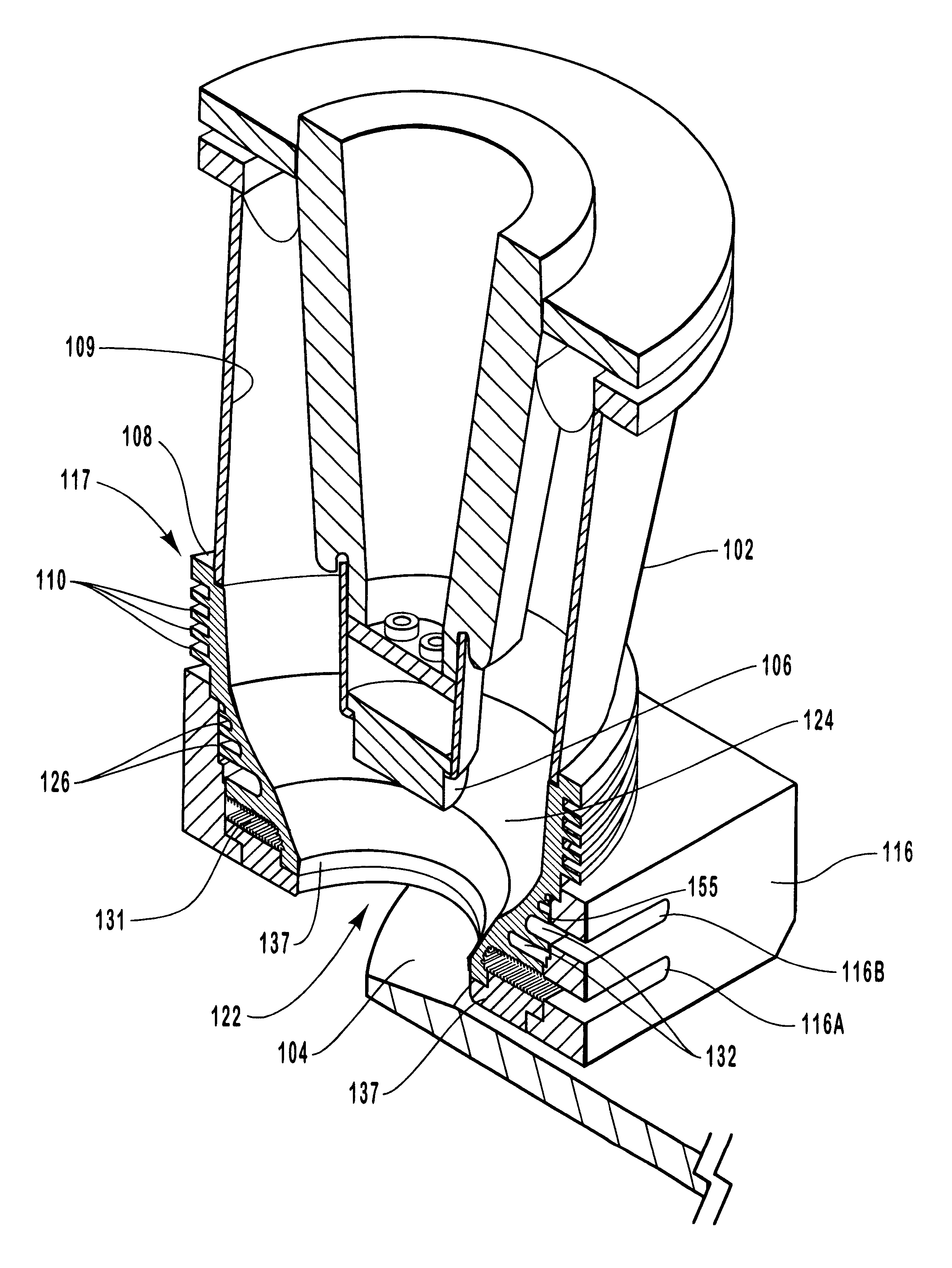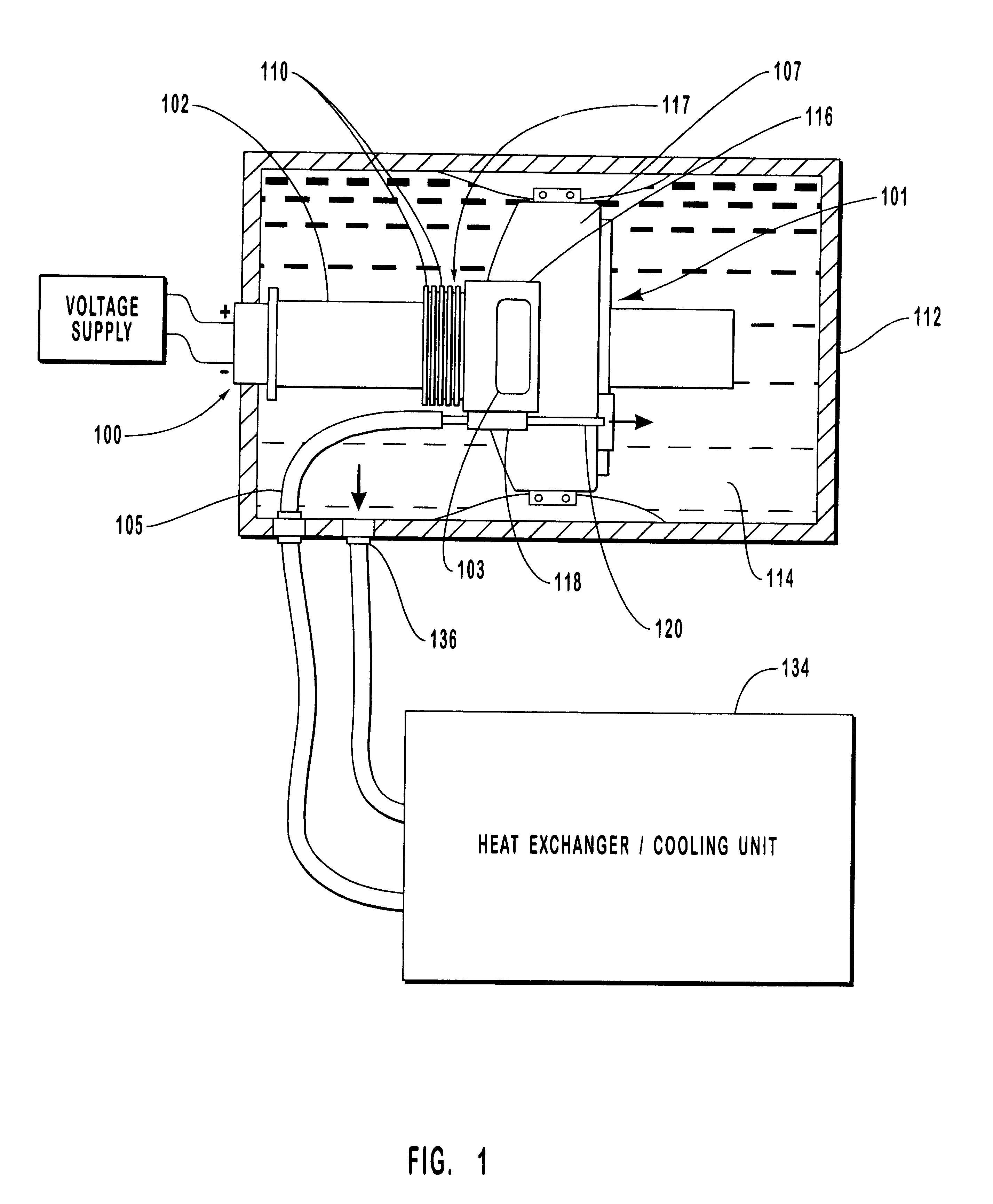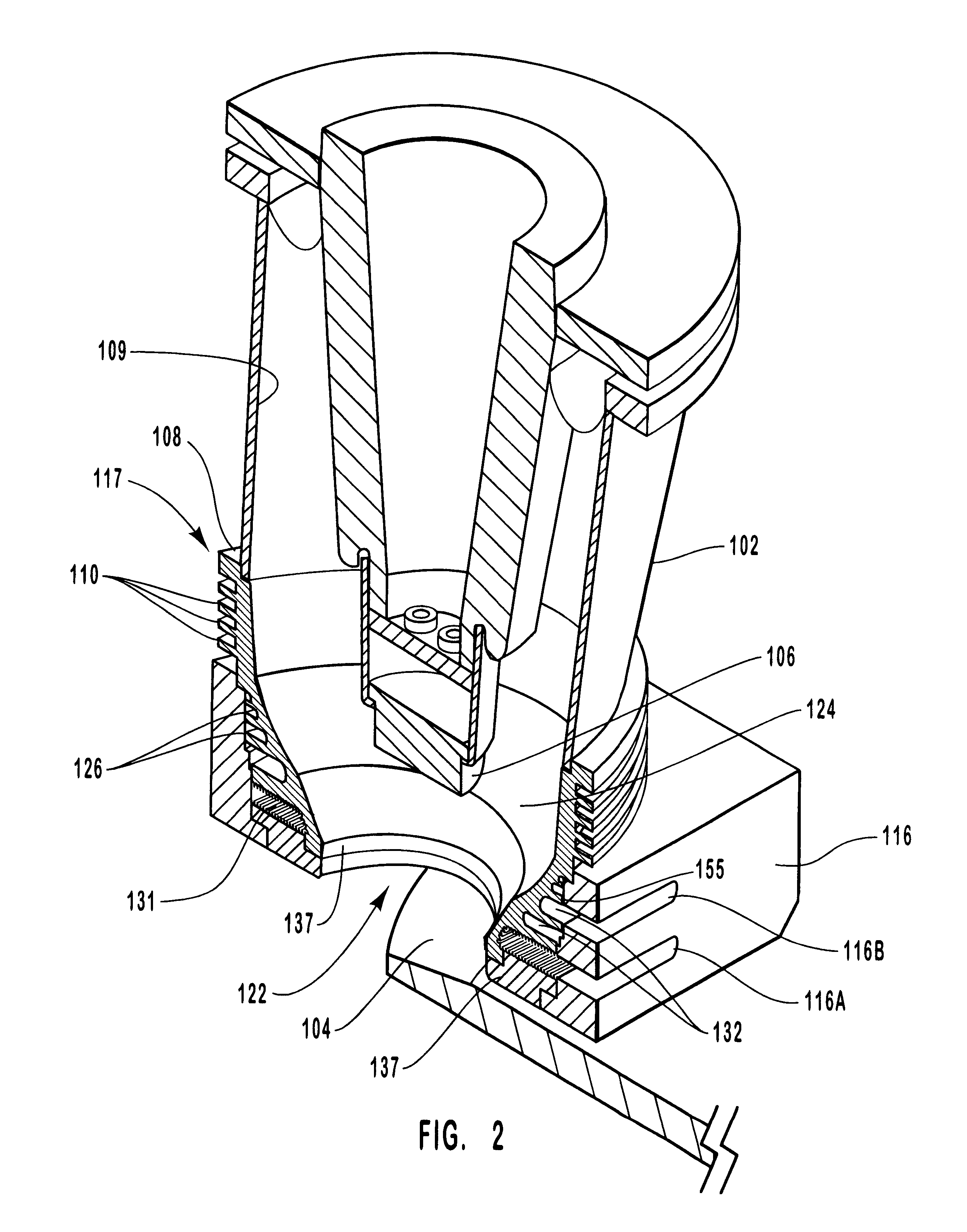Large surface area x-ray tube shield structure
a shield structure and large surface area technology, applied in the field of x-ray tubes, can solve the problems of shortening the operational life affecting the quality of the x-ray image, and high temperature of the x-ray tube structur
- Summary
- Abstract
- Description
- Claims
- Application Information
AI Technical Summary
Benefits of technology
Problems solved by technology
Method used
Image
Examples
Embodiment Construction
Reference will now be made to the figures, wherein like structures will be provided with like reference designations. It is to be understood that the drawings are diagrammatic and schematic representations of presently preferred embodiments of the present invention and are not limiting of the present invention, nor are they necessarily drawn to scale.
Referring first to FIGS. 1 and 2 together, the relevant portions of an x-ray tube device are depicted generally at 100. An x-ray tube, designated generally at 101, is formed generally with an evacuated envelope housing that is typically referred to as a "can" 107. The evacuated envelope, or can, 107 is disposed within a housing 112. Disposed within can 107 is an electron source in the form of a cathode head 106, filament (not shown) and associated electronics (not shown), that is disposed within a cathode cylinder 102. Adjacent to the cathode 106, and attached to the end of cathode cylinder 102, is a electron collection device, sometime...
PUM
 Login to View More
Login to View More Abstract
Description
Claims
Application Information
 Login to View More
Login to View More - R&D
- Intellectual Property
- Life Sciences
- Materials
- Tech Scout
- Unparalleled Data Quality
- Higher Quality Content
- 60% Fewer Hallucinations
Browse by: Latest US Patents, China's latest patents, Technical Efficacy Thesaurus, Application Domain, Technology Topic, Popular Technical Reports.
© 2025 PatSnap. All rights reserved.Legal|Privacy policy|Modern Slavery Act Transparency Statement|Sitemap|About US| Contact US: help@patsnap.com



